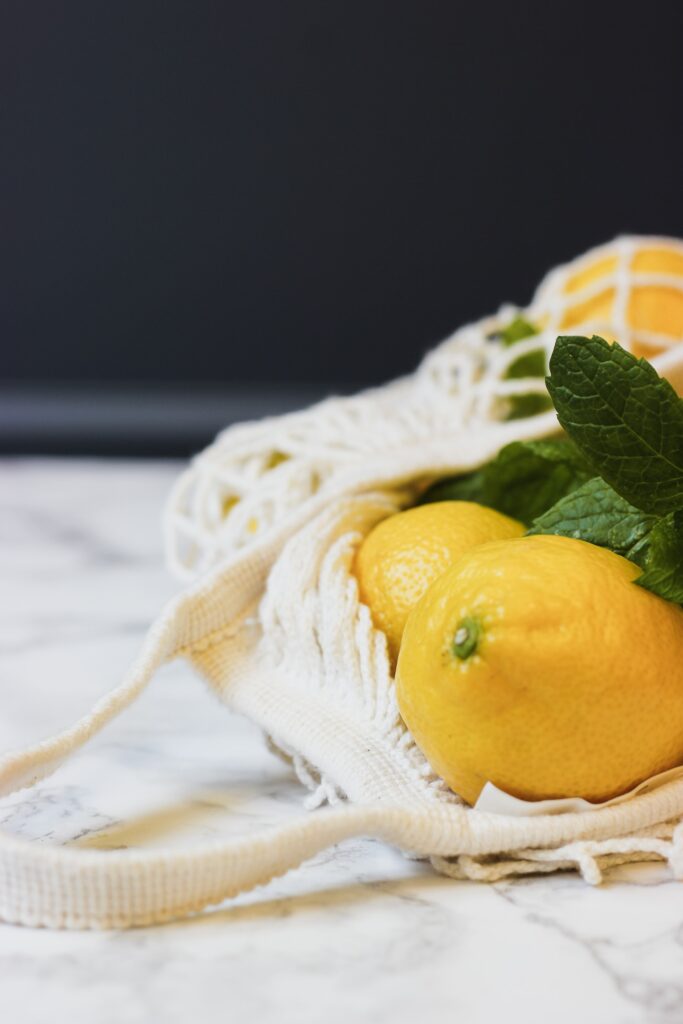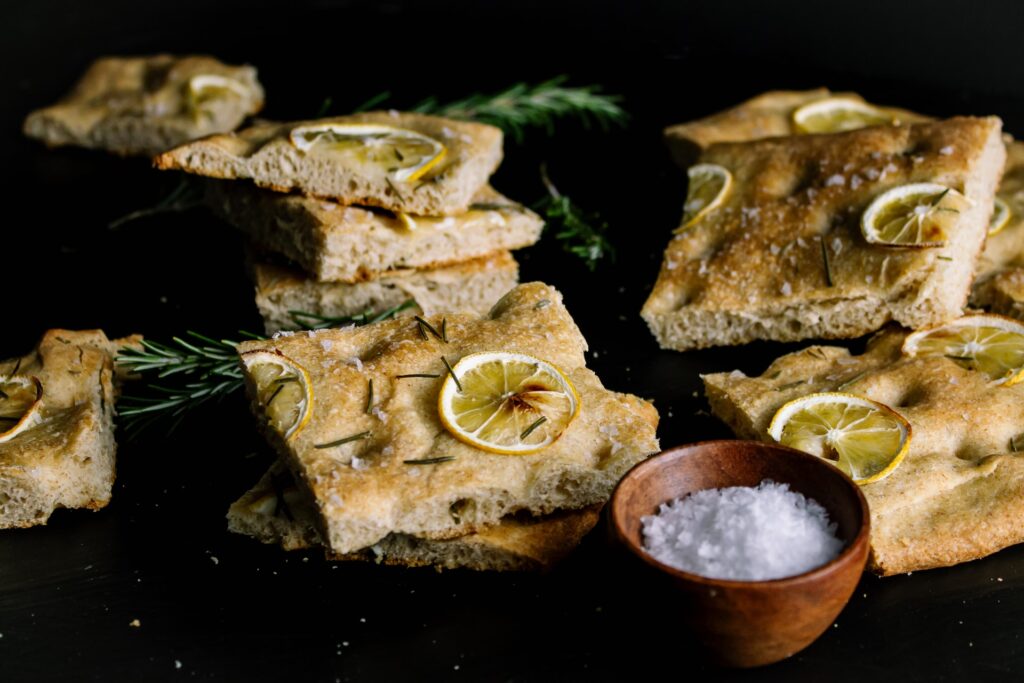When I think of lemons, my mind leaps to the Mediterranean. Driving past bountiful trees along the Greek coast, their intoxicating, come hither blossom calling to me. The thrill I’d get from plucking the fruit only moments before I’d add the juice to a dinner, elevating a mostly humble meal into something nearing perfection. But, in researching this piece, I was intrigued to learn all citrus fruits originated in the Himalayan foothills. And yet, today, they sit in my kitchen in California. We live in a miraculous time.

Just a few pinches of lemon zest can transform a dressing, the juice brightens up anything it touches, and when paired with something sweet, magic happens. But what about the alchemy of transforming lemons with salt and time? Not only does this process lend complexity and nuance, it also enhances the already excellent benefits of this fruit. Hello, probiotic friends.
There, in the Bustling Souk…
When I first encountered a preserved lemon, I didn’t know what it was. Walking along the labyrinthine medina of Marrakech, Morocco, I entered a souk. It was fragrant with conical towers of spice, overflowing with dried herbs, and hanging gourds. On wooden shelves were rows of briny olives, pickled veg, and something I thought to be preserved duck eggs. “Lemons,” the shopkeeper said to me. But they looked nearly translucent, their color more a Golden Delicious apple than any lemon I’d ever seen. Fermentation drastically changes the character of the lemon, softening the harsh acids and mellowing them into tangy, umami flavors rounded by a sweet gentle profile.
Morocco has long been using preserved lemon as a pungent, rich ingredient in their renowned cuisine. Plant-based eaters will find the lemons among dark olives and fork-tender potatoes in tagines, paired expertly with carrots and raisins in a fluffy couscous, or served beside roasted eggplant. In summer, I love to chop them in a dressing for charred red peppers, crunchy cucumbers, and juicy tomatoes. Those who eat animals may have tangia, tajines, stews, or pastries filled with meats ranging from camel to lamb, all paired with the savoriness of preserved lemons.
While I can’t get Morocco’s native Doqq or Boussera lemons where I am, I can get Meyer lemons. Like Doqq and Boussera, Meyer has a thinner skin, sweeter flesh, gentler acid, and a more delicately floral aroma than the powerful Eureka lemon common in northern markets. The Meyer Lemon originates from China and is a cross between citron and pomelo/mandarin, which temper its potency and add a hint of tropical vibrancy.
Aside from Moroccan cuisine, I’ve used preserved lemons in everything from herbaceous falafel, sultry mujadara, and salty Chanh muối, a Vietnamese lemonade. Some recipes I have on my “can I put preserved lemon in that?” list are palm heart ceviche, olive tapenade, mango salsa, and a rosemary flatbread.

Since accidentally moving to California (a Covid story for another time) I have had to start all my fermentations anew. As I began this batch, I couldn’t help but notice how photogenic it was. Alas, there are no photos of my own to accompany this batch. I chose to stay in the moment, quieting the desire to “capture it”. One breath at a time, one slice at a time.
Kitchen meditation. A clean linen towel studded with impossibly bright fruit, a heaping mound of coarse salt, juice sensually dripping down my wrists. I savor the experience: feeling the sun rays from the southern window, swaying with the spritely aromatic beads as they leap into the air, daydreaming about the loved people I’m going to feed with these tangy treasures.
It’s no wonder that in many nature-worshipping practices around the world, lemons represent solar energy and divinity. I can’t think of anything more soul-satisfying than bottling up a little sunshine in the winter to share with you. May you make these salty, savory treats, and share them with those you love, too.
Enjoy, friends.

A Preserved Lemon Recipe (Of Sorts)
But first, a note about my “recipe”. I love using recipes to gather inspiration, however, I’m not sure I’ve ever completely followed ingredient lists or instructions. I feel cooking is mostly intuitive, highly personal, should be flexible to what you have on hand, and most of all, a fun experiment. I’m certain this is why my baking is often… creative?
If you need certainty and clarity when it comes to cooking, please save yourself the anxiety and look up different instructions. But, if you’re ready to boldly adventure into the world of salty lemons, let’s start. Be prepared for your kitchen and hands to smell like a light, spring day.
All you will need to make these beauties:
a clean jar and lid,
enough organic lemons to fill the jar,
lots of kosher salt, (probably a cup or more depending)
a spoon, (or muddler or pestle)
and a knife.
Ready? It couldn’t be simpler. As long as you’re getting the lemons and salt in the jar and covering it all in lemon juice, you can’t mess this up! I’m going for whole lemons so I can use them on some big salad bowls this summer, but you can slice the lemons into quarters, thick coins, whatever you want!
1) Wash and dry your lemons.
2) While the lemons are drying, put about a half inch of salt in the bottom of the jar.
3) Slice into the lemon to quarter it, stopping juuuust before you separate the pieces.
4) Now stuff the sliced lemon with salt. Once it’s packed with salt, put it in the jar and repeat.
Note: As you smash the lemons into the jar, some juice will be released. This is great as you want everything to be covered in salt and juice.
5) Use a spoon if necessary to maneuver the lemon to its place, and go again, salting and smashing your way into lemony oblivion!
6) Occasionally add some salt between lemons; keep that brine salty.
7) When you can’t smash them down any further and everything is covered in lemon juice, I add a piece of parchment paper to the top of the jar and seal the lid.
8) Put it in a dark pantry, whisper a magical spell blessing their transformation (optional), and check in every day for the next few days to ensure the lemons are below the liquid and there’s nothing funky going on.
9) Every day for two weeks I check the jar. Using a clean spoon, I press down any lemons that have made their way to the top and give the jar a good shake to move around the brine. If every day the lemons are fine and there’s no sign of mold, you can ease up on checking and monitor weekly. When you’re happy with the color and texture you can then move it to the fridge, slowing fermentation where they will last forever, theoretically. Mine have never lasted more than a few months though.
NOTE: Some people add additional flavors: bay leaves, cinnamon sticks, coriander seeds, peppercorns, etc. I’ve not tried that yet, but if you do, let me know how it goes, please!
Heads up: When you are ready to use these lemons, rinse them off first before trying! I occasionally use them without rinsing, but only when making a soup or something where they will be diluted.
Fun idea? I saw someone who blends their entire batch in the food processor and uses it as a paste. I may try that to make it easier to add this into literally everything.
What a beautiful ode to the magnificent lemon. I can taste and smell them from your writing alone!
Magnificent is just the right word for the lemon. I hope you enjoy the preserved lemons as much as I loved making them for you.